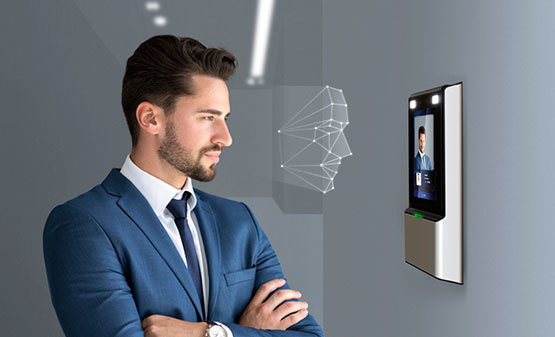2025-04-20
Transform Your Robotics with Advanced 3D DToF Range Sensors
Table of Contents
- 1. Introduction to 3D DToF Range Sensors
- 2. Understanding DToF Technology
- 3. Applications of DToF Sensors in Robotics
- 4. Advantages of 3D DToF Sensors
- 5. Comparison with Other Sensor Types
- 6. Future Trends in DToF Sensors
- 7. Integrating DToF Sensors into Your Robotics Projects
- 8. Frequently Asked Questions
1. Introduction to 3D DToF Range Sensors
In the fast-evolving world of robotics, precision and reliability are paramount. **3D DToF (Direct Time of Flight) range sensors** stand out as a transformative technology, enabling robots to perceive their environments with unparalleled accuracy. These sensors measure distances by calculating the time it takes for a light signal to bounce back from an object. This article delves into the mechanics, applications, and future prospects of 3D DToF range sensors, positioning them as essential tools in modern robotics.
2. Understanding DToF Technology
3D DToF sensors utilize a method that significantly enhances depth perception in robotic systems. The technology operates by emitting modulated light signals and measuring the time it takes for the reflected signals to return. This approach provides accurate distance measurements over varying ranges, making it suitable for diverse applications.
The Mechanics of DToF Sensors
The core of DToF technology involves a light source (often a laser) and a detector. When the light is emitted, it travels and reflects off surfaces, returning to the sensor. The sensor calculates the time taken for this round trip, converting it into a distance measurement. This technology allows for the creation of high-resolution 3D maps of environments, giving robots the ability to navigate complex settings.
Key Features of DToF Sensors
- **High Accuracy**: DToF sensors provide precise distance measurements, essential for tasks requiring fine motor skills.
- **Fast Response Time**: With rapid measurement cycles, these sensors are ideal for dynamic environments.
- **Robustness**: Designed to operate under various conditions, DToF sensors maintain performance in diverse lighting and weather conditions.
3. Applications of DToF Sensors in Robotics
3D DToF sensors are revolutionizing several sectors within robotics. Their ability to deliver intricate spatial data enhances functionality and safety across various applications.
3.1 Autonomous Vehicles
In autonomous vehicles, 3D DToF sensors are instrumental in real-time navigation and obstacle detection. They assist in creating detailed maps of surroundings, enabling vehicles to make informed decisions and navigate safely. The precision offered by these sensors significantly reduces the risk of accidents, enhancing overall safety.
3.2 Industrial Automation
In industrial settings, DToF sensors contribute to automation processes by improving object detection and inventory management. Robots equipped with these sensors can accurately gauge distances and detect the presence of items, ensuring efficient operation in warehouses and manufacturing lines.
3.3 Service Robots
Service robots, deployed in hospitality and healthcare, leverage 3D DToF sensors for enhanced interaction with humans. These sensors allow robots to navigate effectively, avoid obstacles, and understand spatial relationships, leading to improved user experiences.
4. Advantages of 3D DToF Sensors
The adoption of 3D DToF range sensors in robotics presents numerous advantages that set them apart from traditional sensing technologies.
Enhanced Depth Perception
DToF sensors excel in creating detailed 3D representations of environments. This ability to perceive depth helps robots understand their surroundings and interact more naturally with objects and people.
Improved Safety Features
By providing precise measurements, DToF sensors enhance safety in robotic applications. For instance, in autonomous vehicles, accurate distance calculations can prevent collisions by enabling timely responses to obstacles.
Cost-Effectiveness
While some advanced sensing technologies can be expensive, the scalability of DToF sensors allows for cost-effective integration into various robotic applications. Their versatility means they can be utilized in both high-end and budget-friendly robotic solutions.
5. Comparison with Other Sensor Types
To appreciate the advantages of 3D DToF sensors, it is crucial to compare them with other sensor types commonly used in robotics.
Ultrasonic Sensors
While ultrasonic sensors are widely used for distance measurement, they are limited by their accuracy and the influence of environmental conditions. In contrast, 3D DToF sensors provide higher precision and work better in varying lighting conditions.
Lidar Technology
Lidar systems are renowned for their high accuracy in mapping, but they tend to be more expensive and complex. DToF sensors offer a more straightforward and cost-effective solution while still delivering impressive performance.
6. Future Trends in DToF Sensors
The future of 3D DToF sensors in robotics is bright, driven by ongoing advancements in technology and increasing demand for automation.
Integration with AI
The integration of DToF technology with artificial intelligence (AI) is set to enhance capabilities further. By combining these sensors with AI algorithms, robots can interpret and react to their environments more intelligently, leading to improved decision-making processes.
Miniaturization and Cost Reduction
As technology evolves, the trend toward miniaturization will likely continue. Smaller, more cost-effective DToF sensors will make advanced robotics accessible to a broader market, encouraging innovation in various fields.
7. Integrating DToF Sensors into Your Robotics Projects
When incorporating 3D DToF sensors into robotics projects, several key considerations should be taken into account.
Choosing the Right Sensor
Select a DToF sensor based on your project’s specific requirements, including measurement range, accuracy, and environmental conditions.
Software Integration
Effective integration of DToF sensors requires the development of software that can process the data accurately. This may involve programming skills and an understanding of sensor data interpretation.
Testing and Calibration
Once integrated, thorough testing and calibration are essential to ensure the sensor operates as intended. Fine-tuning the settings can enhance performance and accuracy.
8. Frequently Asked Questions
What are DToF sensors used for?
DToF sensors are used in various applications, including autonomous vehicles, industrial automation, and service robots, providing accurate distance measurements and 3D mapping capabilities.
How do DToF sensors work?
DToF sensors work by emitting light signals and measuring the time it takes for the light to return after reflecting off an object, allowing for precise distance calculations.
What are the advantages of using 3D DToF sensors?
3D DToF sensors offer enhanced depth perception, improved safety features, and cost-effectiveness compared to traditional sensing technologies.
How do DToF sensors compare to Lidar?
While Lidar systems provide high accuracy, DToF sensors are often more affordable and simpler to integrate, making them a suitable choice for various robotic applications.
What is the future of DToF sensor technology?
The future of DToF sensors includes advancements in AI integration, miniaturization, and cost reduction, expanding their applications in robotics and automation.
Conclusion
The integration of **3D DToF range sensors** into robotics represents a significant leap forward in precision, safety, and versatility. As technology continues to evolve, these sensors will play an increasingly vital role in shaping the future of automation and robotics. By embracing the potential of DToF sensors, industries can innovate and enhance their operations, unlocking new opportunities for efficiency and effectiveness in a rapidly changing landscape.














